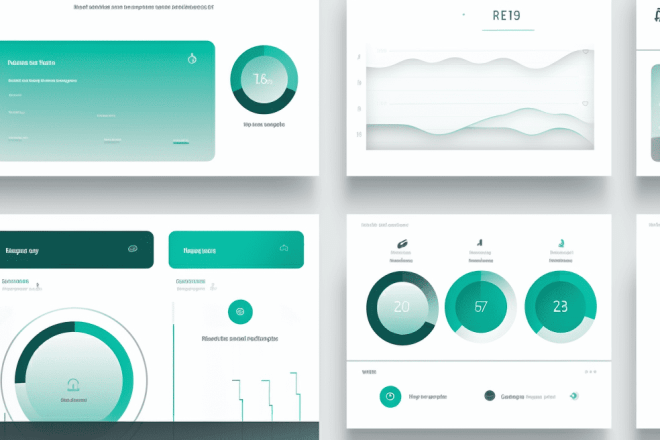You’ve no doubt heard of Siri, Apple’s voice assistant on most iOS devices including the iPhone, iPad, and Apple Watch. What about Alexa? Alexa is Amazon’s voice interaction assistant, plugged into the Echo and similar devices. Then there’s Google Assistant, Microsoft’s Cortana and many other third-party services. Mark Zuckerberg of Facebook fame even created a voice assistant of his own called Jarvis.
To say these services have changed the way we interact with our devices is an understatement. They’ve completely changed everything about the industry. Today, it’s not a stretch to imagine controlling our TVs, cars and vehicles, phones, toys and even game consoles with simple voice commands. More importantly, this can done through natural speech, instead of forced keywords or phrases.
But how does this relate to the modern design of apps and products? How will the customer interactions with modern software and apps change in the near future? What will software developers and product designers need to bear in mind to stay in touch with this market shift?
Voice Interaction and Dictation Is the Future
One thing to keep in mind is the answer to this single question: If you had a more convenient, easy way to carry out actions with a device, would you take advantage of it?
Unless you’re crazy — or don’t understand how to use a feature — that answer is most assuredly yes.
It alludes to the voice interaction and voice control support modern devices offer. At any moment, you can whip out your phone, ask the voice assistant housed within a question, and have an answer called out to you — all in mere seconds.
The same is true of voice dictation which allows you to call out messages or content and have it relayed to an app or contact on your phone. For example, Siri lets you compose and send text messages exclusively with your voice, which is great when you have your hands busy with something like driving. It has already revolutionized the way in which consumers use and interact with their devices.
But it’s also changed the way consumers interact with the world, too, including apps, brands, websites and search engines, and more.
Daily Interactions
How? Well, Alexa from Amazon’s Echo can offer some great examples of this. Let’s say you get up in the morning late and are hurrying to prepare for work or school. You look into your fridge or pantry and realize a number of items are low or depleted. You won’t have time to go to the store yourself. You’re already leaving late, and you’ll be occupied all day and most of the evening, too.
You can simply call out to Alexa and tell her to order what you need or add it to a shopping list. Alexa will carry out your request, leaving you free to rush off.
As you might expect, Alexa is tied to Amazon through their online services and mobile app which means she can order items directly from the retailer — so long as the admin or user authorized it. Not only does this completely alter the way in which users are interacting with devices like Echo, but it changes the way they interact with brands, too.
Over time, these services and devices — like Alexa or Siri — will evolve to accomplish more advanced tasks and actions as well as to respond to more human, natural commands.
Conversations with the devices will go from “Alexa, order me more X item,” to “Alexa, I’m running low on X,” or “Alexa, can you get more X?” More importantly, multiple responses and branching conversations will be possible and programmed to happen. As no two people talk exactly alike, this is important for delivering more natural and reactive responses.
What Does This Have to Do With Design?
The evolution of these services and products is of great concern to you as a designer or developer. Why? Because you are responsible for creating and producing the experiences consumers will have. Here are the factors to look at:
1. Cover the Command Spectrum
Step one is to ensure that not just natural speech will be honored, but multiple connotations, meanings, translations and more will be as well. For example, when you want pizza, you can say any number of things to a voice dictation device.
Some examples of commands include:
- Order me a pizza
- Send me a pizza
- Deliver me a pizza
- Have a pie ordered
- Get me a pizza
- Bring me a pizza
- I want pizza
- I need pizza for dinner
And that’s just scratching the surface! You’ll need to ensure any one of these commands will carry out the action of ordering a pizza, and then whatever else a consumer might use.
2. Get the Personality Right
Modern voice assistants and related services now have a personality. They are more than just a tool that responds via a script or storyboard and just repeats what you’re saying. They have to interact with consumers on more a natural, engaging level.
If you ask Siri to tell a joke, for instance, she tells a joke. This is opposed to responding with a panned “sorry, I cannot do that” response. It gives Siri more personality and more human traits, and it allows consumers interacting with her to have a more personal, memorable experience.
The best way to establish this is to come up with a system persona and exhibit said persona in nearly every reaction, response and process. Other components of a personality are important to optimize, too, such as tone of voice, look and feel of a persona, and much more.
3. Your User Flows Mean Nothing
Obviously, when you start, you’re going to need to come up with some accessible user flows and storyboards. These will represent the bulk of the interactions your users will have with the system. But once the system itself is designed and your persona is live, it’s time to scrap all those flows and plans.
Instead, pay attention to how your testers and users interact with the system. Do they use it to conduct mostly queries or web searches? Are they using it to shop, play audio or media content, or even browse social networks? Are they using it for something you planned or something completely new you never thought of?
Don’t spend too much time perfecting your user flows when you can see real-world interactions taking place. Furthermore, place your trust and focus on the most positive interactions you see happening.
4. Your System Must Give Back
Whether you’re developing a voice-enabled app for your online store, or you’re simply creating a third-party tool to offer advice and assistance, your ultimate mission must be to give back to your audience. The developed platform must benefit your customers in some small way, or else they’re never going to adopt and use it. It’s as simple as that.
About The Author
Eleanor Hecks is the Editor-in-Chief of Designerly Magazine, an online publication dedicated to providing in-depth content from the design and marketing industries. When she's not designing or writing code, you can find her re-reading the Harry Potter series, burning calories at a local Zumba class, or hanging out with her dogs, Bear and Lucy.


